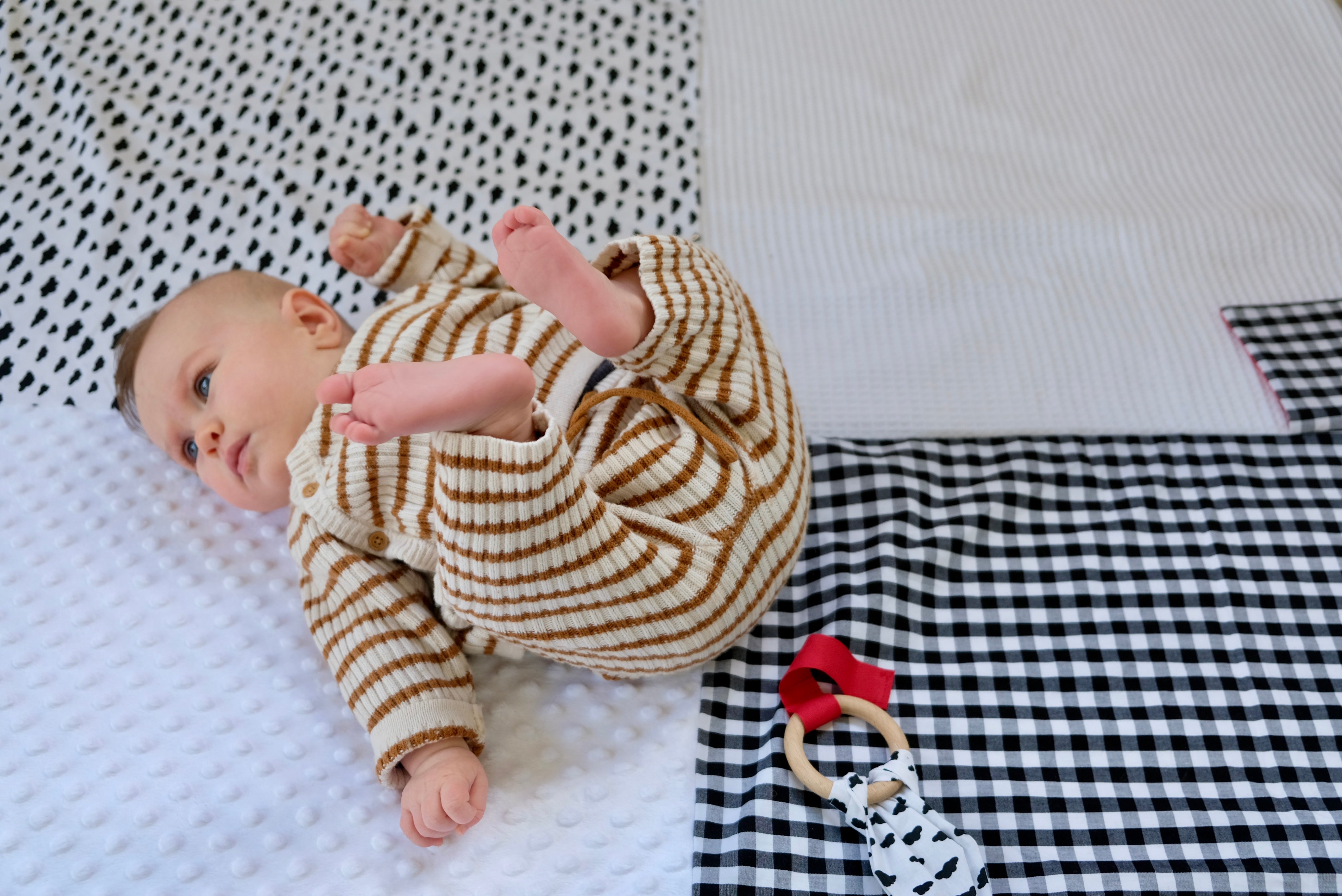
Did you know ?
A child first needs to experience each of his senses before he can assemble and assimilate them. He is born with 90 billion neurons, but they are not yet connected to each other.
The sensory discovery of each sense will allow each of the brain areas to be enriched (auditory, tactile, visual, etc.). Then, sensory experience and re-experimentation at their own pace will allow them to make connections between each of these areas.
Multisensoriality will thus lead to learning processes. There is therefore no point in using all the mat's functions at the same time from a very young age!
Our sensory cover is ideal for your baby from 0 to 15 months .
It is designed to make him aware of the world around him, to arouse his curiosity , while respecting his pace of development.
A GENTLE AWAKENING OF THE SENSES
-

The view
Vision is the last sense to develop in the fetus and its visual acuity is considered mature at only 2 years of age.
That's why our sensory cover is high in contrast: monochrome black and white with touches of bright primary colors.
Around 3 months, coordination between peripheral vision (on the sides) and focal vision (along the axis) is established . This is why we chose Vichy fabric. Due to its intrinsic contrasts, it helps your baby to better perceive a relief (for example: the red rattle or even his hand) which will focus his attention. -

The touch
Developing the sense of touch is fundamental because we are constantly in contact with something, someone. It is the first sense to develop in utero.
It is important from a very young age to stimulate their curiosity by multiplying tactile sensations , as our sensory cover offers: rough honeycomb, polka dot velvet, smooth fabric, felt, rattle, ribbons.
By encouraging tactile exploration, coupled with their emerging sense of observation, your baby will gradually be encouraged to grasp, then to move -

Hearing
This is the most acute sense in the fetus , the infant hears from birth but his ability to recognize the meaning of a sound develops over time.
Your child is more responsive to your voice: sing nursery rhymes (or French variety works too), change your tone, imitate their sounds!
From 3 months, your baby begins to pay attention to sound toys , stimulate his hearing with the hidden sounds of our sensory cover (rustling paper, "squeak-squeak")
THE FIRST LEARNINGS
-

The acquisition of fine motor skills
Once the infant's grasping reflex has been developed, around 3 months, voluntary grasping begins.
Step by step, his motor skills and movements will become more refined as he explores, until he acquires the thumb-index pinch between 9 and 12 months.
The rattle with its rustling ears and natural grip is ideal for your baby to grasp, and the links and ribbons of different textures will help make their movements more accomplished. -

Establishing the cause and effect link
From 6/9 months, your child becomes aware of his actions and his results.
Several of the sensory cover's interactions are designed to encourage this: "squeak-squeak," a rattle to look for in the pocket, then to scratch and unscratch. -

Object permanence
This is the child's awareness that an object continues to exist even if they no longer see it. This step helps them realize that even when their parents leave, they continue to exist (to ease the infamous separation anxiety!).
Between 6 and 9 months, your baby will be able to find the rattle partially hidden in the pocket, between 10 and 12 months he will be able to find it completely hidden. This experiment can be repeated several times with other types of toys!





